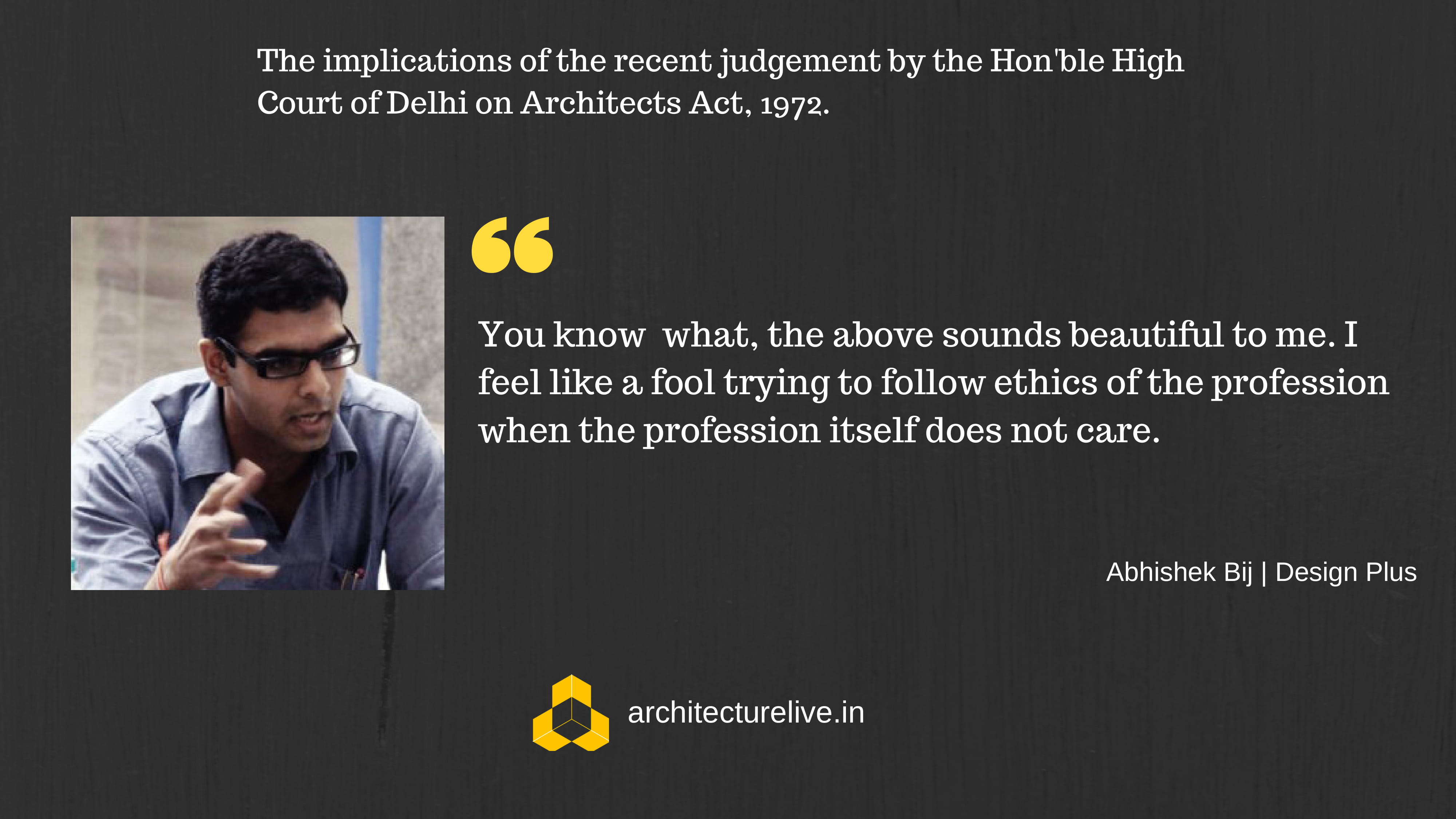- The verdict is a reality check on the Architect’s Act and the Council of Architecture
Let me start with a fact that there would be an appeal against the verdict. So that’s a given. But more than the momentary joy or disappointment of the petitioners, this verdict is a wake-shake up call for the CoA.
The verdict has questioned the foundation of the Architect’s Act and the sole purpose of CoA’s existence. Not only CoA has been reduced to the flagbearers of the usage of a title only (of course the title of an ‘architect’), their reason for formation and sustenance has been questioned. If CoA is not the representative for the profession of Architecture, then it is like a ‘mere’ IIA. Just a professional body with the right to the action. Hence, I believe the appeal should not necessarily be from Sudhir Vohra or Anil Sharma, it should be from the council.
- If the verdict is upheld, it opens a Pandora’s box
As on date, the council has no powers to regulate the profession they can only uphold the use of the title. If this status is maintained every other firm would- Switch to a Pvt. Ltd. (not necessarily a bad move in my opinion)
- Invite partnership from outside the profession
- Invite investments and offer a stake in the company
- The directors, chairmen, the board would cease to be architects. Architects would just be employees hired to maintain the minimum requirement or as subject experts.
- Every known practitioner (registered or not) would advertise for laminates, sanitaryware, tiles, tensile.
- Liabilities will be the thing of the past as there would be no regulator.
You know what, the above sounds beautiful to me. I feel like a fool trying to follow ethics of the profession when the profession itself does not care.
Q: What should be the next step?
1 – COA should definitely appeal with all its might sighting, all it has done for the profession. Present a self-evaluation report card in education, professional conduct, debates, letters from the ministry… Whatever it possesses to jacket their argument as the ‘regulator of the profession’.
2 – It’s not COA’s battle alone. But also, IIA needs to gather a team of Architects who have members of parliament on their speed dial. Have the amendment to the act (Architects bill 2010) tabled at the parliament. The bill has less ambiguity than the current act.
3 – The community of Architects that are disgruntled by the order – Facebook noise is not helping nor it is enough. Make a much larger noise against the verdict and not the council, at least for the moment. Create a petition of our own against the order. Let’s get some numbers. We’ve lost the Hall of Nations, we’ve witnessed Amaravati Malpractice, we’re witnessing bureaucratic nonsense for the National War Museum Competition and now, the act falls apart.
 Abhishek Bij is a Partner and Lead Designer at Design Plus.
Abhishek Bij is a Partner and Lead Designer at Design Plus.
Design Plus is allegedly the only Architectural Firm in India to win 6 National Level Design Competitions since 2010. A 27 acre, National Sports complex, for Government of Dadra and Nagar Haveli being one.
Upon completion of B.Arch from Sushant School of Art and Architecture(SSAA) and his M.Arch (Architecture and Urbanism) from the Design Research Lab [DRL] at The Architectural Association(AA), London, Abhishek attempts to serve as an observer/critic/admirer of the Indian AEC industry, especially the marriage of high tech design processes and the low tech methods of execution which prevail in the country.
Abhishek is a keen academic. He has taught at various Architecture Schools in several capacities that include computational design workshops to being a Unit Master to guiding Research and Thesis Projects.
Abhishek’s views on computational design, ethics of practice, Architectural Design processes are widely presented and published.








2 Responses
I agree with Abhishek
“अभी नहीं तो कभी नहीं”